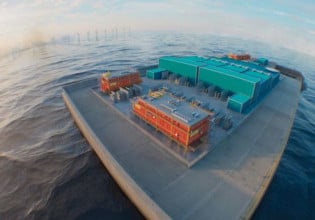METI Aims for “World’s Largest” Li-ion and Redox-Flow Battery Installations
Japan’s Ministry of Economy, Trade and Industry (METI) has released contracts to develop two grid-scale energy storage systems to examine the installation and utilization of such large-scale storage batteries in electricity grid substations as bulk power grids of the utility companies and to see to what extent the amount of renewable energy can be increased for introduction, as well as developing and establishing the technology to optimally control and manage such batteries, considering the operational needs and conditions of the grids as a whole.
This project is Japan’s first effort to introduce large-scale storage batteries in electricity grids, and METI aims to rapidly acquire the necessary technology and know-how so as to utilize such batteries in electricity grids in a specific manner. These activities include two elements: the use of Li-ion batteries in a 20,000 kWh installation to deal with frequency variations and the use of a 60,000 kWh redox flow battery for adjusting the supply-demand balance in cases of demand decrease and dealing with frequency variation.
Tohoku Electric Power will install the world’s largest large-scale Li-ion storage batteries (20,000 kWh) in an electricity grid substation (Nishisendai substation) as part of a bulk power grid system. The company will examine how well the batteries function to see whether or not they are able to adjust frequency to address the variation of electricity output generated by wind and photovoltaic power generation.
Specifically, it will also study potential operational approaches in which the batteries are coordinated to operate with thermal power generation while utilizing the batteries as much as possible as a function to adjust frequency, suppressing the impact on the life of the battery system. Based on the results of the project, the company will boost the capacity of the supply-demand adjustment function by around 10% in the Tohoku area and endeavor to expand the introduction of renewable energy.
Hokkaido Electric Power and Sumitomo Electric Industries will jointly install the world’s largest large-scale redox flow storage batteries (60,000 kWh) in an electricity grid substation (Minamihayakita substation) as part of a bulk power grid system. They will endeavor to examine how well the batteries function in addressing the variation of electricity output generated by wind and photovoltaic power generation and also to develop technology to optimally control and manage the battery system.
A redox flow battery can be utilized not only to address frequency variation but also to adjust the electricity supply-demand balance in case of demand decrease as well as cope with fluctuations in supply-demand balances over a long period of time. Based on the results of the project, both companies will aim to boost the capacity of the supply-demand adjustment function by around 10%. They will endeavor to cooperate with each other and unify the technology and know-how they have so as to expand the introduction of renewable energy into the Hokkaido area.






